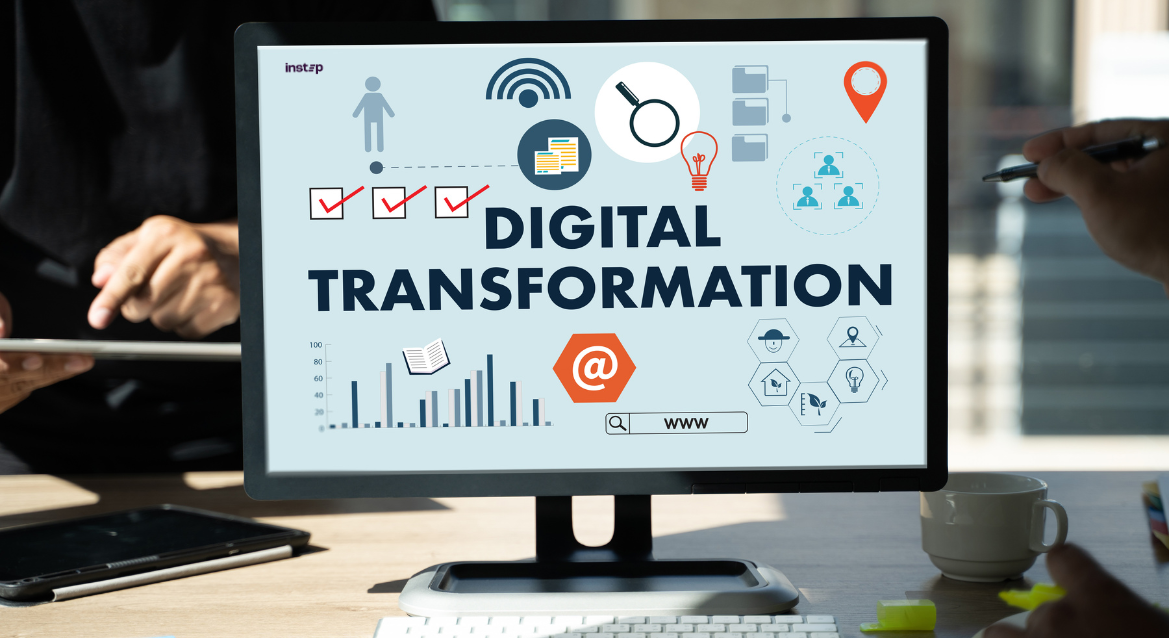
Conducting an HR digital transformation is often overlooked in a business, but its a process that can have a huge impact and, being realistic, is something your company should be doing if it hasn’t already.
That’s because the shift towards artificial intelligence, automation, and hybrid work shows no sign of slowing down.
And HR leaders ironically are the ones who support business change, but how often to they have the chance to lead their own transformation?
For too long, HR has been the driver of digital adoption for others. Now, it’s time to turn the lens inward.
That’s why this article explores how HR leaders can successfully implement HR digital transformation, which can mean several things.
From mindset shifts and technology adoption to data strategy and employee experience, we’re here to take a deep dive.
HR digital transformation may be something you’re just starting to think about, or you might be ready to make sweeping changes to the way you do things. Either way, this guide will help you build a future-ready HR function.
Let’s start with the why.
Why HR Digital Transformation Is Essential
HR leaders, you may not always get the credit you deserve, but at Instep, we appreciate that the role of HR is all encompassing.
No longer confined to administrative tasks, HR managers and executives alike are now expected to play the role of strategic partners, culture architects, and data-driven decision-makers.
The bar is set high, but how on Earth do you expect to meet these expectations?
To us, the answer is quite clear. HR must embrace digital transformation.
Here’s why HR digital transformation is critical in 2025:
- Workforce expectations have changed: Employees demand flexibility, transparency, and personalised experiences.
- AI is reshaping HR functions: From recruitment chatbots to predictive analytics in retention, automation is becoming the norm.
- Data is underutilised: HR teams collect vast amounts of data but often lack the tools to turn it into actionable insights.
- Competitive advantage: Companies with ‘digitally mature’ HR functions outperform peers in engagement, innovation, and agility.
The Four Pillars of HR Digital Transformation
To build a resilient and future-ready HR function, leaders must focus on four key pillars:
1. Digital Mindset & Culture
Transformation starts with people. HR must model the mindset it wants to see across the business, which means openness to change, experimentation, and continuous learning. This includes upskilling HR teams in digital literacy, AI fluency, and agile thinking.
2. Technology Infrastructure
Modern HR requires modern tools. If you aren’t using cloud-based HRIS platforms, AI-powered recruitment software, and digital learning systems, then you’re falling behind the times. Integration and user experience should be prioritised to ensure adoption and impact.
3. Data & Analytics
HR must move from reactive to predictive. By leveraging people analytics, HR can forecast turnover, identify skill gaps, and personalise development plans. This data-driven approach enhances decision-making and aligns HR with business strategy.
4. Employee Experience (EX)
Digital transformation should enhance, NOT replace, the human element. HR must design digital-first, human-centric experiences that prioritise wellbeing, inclusion, and engagement. Think self-service portals, real-time feedback tools, and personalised learning journeys.
Top 5 HR Management Tools You Should Be Using in 2025
As part of your HR digital transformation, selecting the right tools is essential. Here are five platforms leading the way in 2025:
1. HiBob
Best for: Mid-sized and multinational companies
HiBob is a modern HRIS that centralises employee data, automates workflows, and enhances engagement. Its intuitive interface and strong analytics make it a favourite for HR teams driving transformation.
2. Workday
Best for: Enterprise-level HR and finance integration
Workday offers a unified platform for HR, finance, and planning. It’s ideal for large businesses needing robust analytics, global compliance, and scalable infrastructure.
3. BambooHR
Best for: Small to mid-sized businesses
BambooHR is known for its ease of use and quick deployment. It includes applicant tracking, onboarding, and performance management—perfect for growing teams.
4. Rippling
Best for: All-in-one HR and IT management
Rippling combines HR, payroll, and IT in one platform. It’s especially useful for hybrid and remote teams, offering seamless onboarding, device management, and compliance tools.
5. SAP SuccessFactors
Best for: Global enterprises with complex HR needs
This platform supports end-to-end talent management, learning, and workforce analytics. It’s a go-to for organisations looking to digitise every stage of the employee lifecycle.
How to Implement HR Digital Transformation: A Step-by-Step Guide
HR digital transformation doesn’t happen overnight. Here’s a practical roadmap to guide your journey:
Step 1: Assess Digital Maturity
Start with an honest audit of your current tools, processes, and skills. Identify gaps in technology, data usage, and digital capabilities.
Step 2: Define a Clear Vision
Align your transformation goals with broader business objectives. Involve stakeholders across departments to ensure buy-in and relevance.
Step 3: Prioritise Quick Wins
Focus on initiatives that deliver high impact with low complexity, like automating onboarding or digitising performance reviews.
Step 4: Invest in Skills & Change Management
Equip your HR team with the skills to lead digital change. This includes training in new tools, data literacy, and change leadership.
Step 5: Measure & Iterate
Use KPIs like time-to-hire, engagement scores, and learning uptake to track progress. Continuously refine your approach based on feedback and results.
The Role of Learning & Development in HR Digital Transformation
Learning and development (L&D) is both a driver and a beneficiary of HR digital transformation.
As companies shift to digital-first models, L&D must evolve from classroom-based training to blended, personalised, and AI-enhanced learning experiences.
At Instep, we help HR leaders and teams build the skills needed to thrive in a digital world. From leadership development to digital fluency, our programmes are designed to support transformation at every level.
Lead the Change You Want to See
HR digital transformation might seem like taking a leap, which is natural to feel. Like any change, it means embracing the ‘new’.
But it’s not just about adopting new technology. It’s about reimagining how HR delivers value in a digital age. By embracing digital tools, data, and a culture of continuous learning, HR can become a true strategic partner in shaping the future of work.
Run with the change now, and you will thank yourself in a few months time.
So, HR leaders, are you ready to lead by example?
Start small, think big, and move fast!
And book a free education consultation with Instep if you’d like some help in achieving your goals.


